Last updated: July 28, 2023
We recently saw a beautiful horse with long hair prancing around an arena. It had a colorful coat, a long mane covering its neck, and tail hair that flowed to the ground. My grandson asked me what kind of horses have long hair, so I decided to research his question.
Horse breeds with long hair include Gypsy Vanners, Icelandic Horses, Haflingers, Black Forest Horses, Paso Finos, and Friesians. Many other horse breeds can grow long manes and tails, but these are the ones that typically grow the longest.
Most horses can grow long manes and tails with proper attention and care. But there are select horse breeds with long hair, tails, and manes that come more naturally.
This article is part of my series focused on horse breeds-I started by writing an introductory piece: Horse Breeds: The Ultimate Guide. The introduction to the series is a comprehensive overview of different breeds and types of horses.
Horse breeds with long manes and tails.
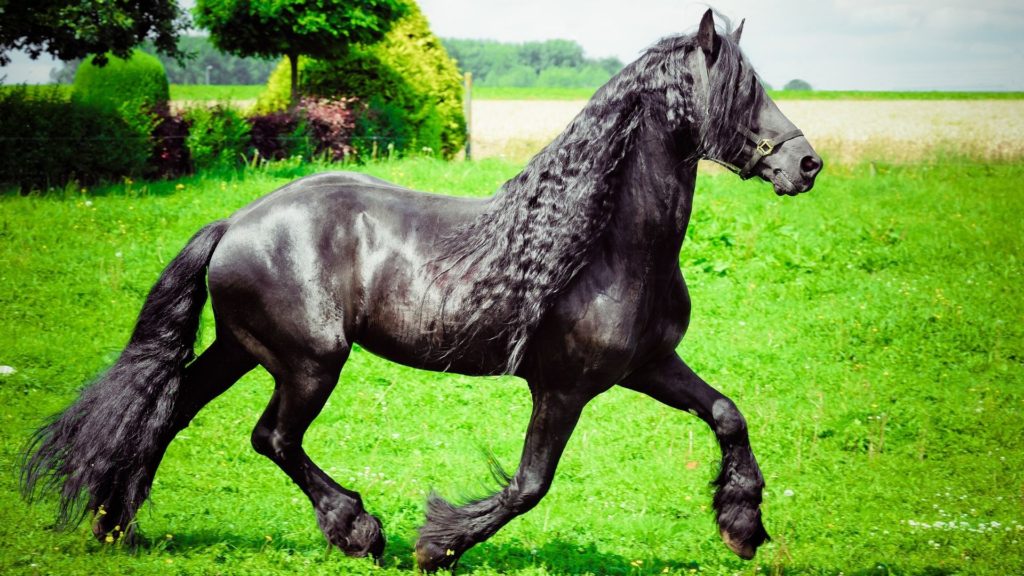
Gypsy Vanner
Gypsy Vanners are the traditional horse used to pull Gypsy wagons across Europe. These beautiful animals were bred for strength, temperament, and looks. They’re extraordinarily versatile.
Because Gypsies typically traveled in their homes, the horses were a part of the family. So the kids could play on them and with them when the animals weren’t transporting the wagon.
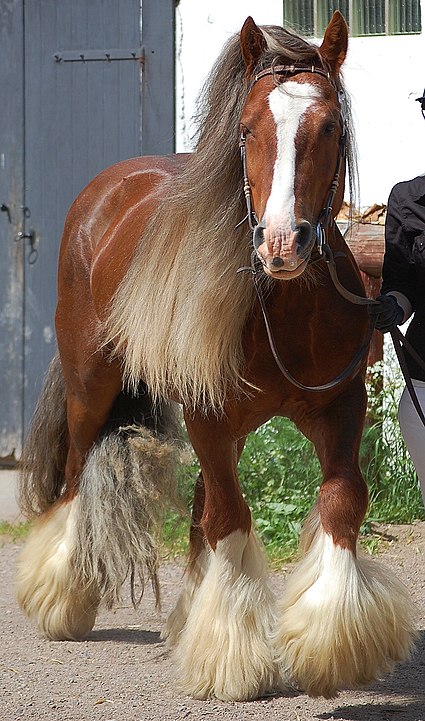
The unique Gypsy Vanner breed was noticed by an American couple and brought to the United States. Once here, breed standards were established for uniformity. By setting standards, the popularity of the breed has dramatically increased.
The hair standard includes the following; horses must have feathers that start at the knees in front and near the hocks in the rear. This hair must extend over the front of the hooves, and the horses must have ample to abundant mane and tail. Ideal hair is straight & silky.
If you are interested in reading more about Gypsy Vanners, check out this article I wrote: Gypsy Vanner or Irish Cob: Colors, Height, and Prices; it includes more details about their fascinating history.
While Gypsy Vanners are shorter than a traditional draught horse, their long hair and thick feathering are inherited from their draught horse ancestors.
Although the hair on a Gypsy Vanner looks exceptional, it can take several hours to clean, dry, and comb out to look presentable.
Icelandic Horse
When they execute their signature tölt and flight speed gait, Icelandic horses look magical as their mane bounces rhythmically and their tail drifts behind.
They were initially brought to Iceland by Vikings around 900 AD. and have a lot of similarities to the Mongol horses used by Ghengis Khan to conquer vast regions.

The Icelandic horses are likely the purest horse breed in the world. But, unfortunately, horse imports are forbidden to Iceland, and even an Icelandic horse is banned from returning once it leaves.
The breed is known for its thick manes and tails, along with surefootedness and friendly temperament. It’s not only the horses’ main and tails that are thick; during the cold winters of Iceland, their winter coat of hair insulates their body.
Haflinger Horses
Haflingers are always chestnut, and most have a flaxen mane and tail. They are great riding horses and suitable for pulling small wagons. That’s because the tallest Haflingers don’t exceed 15 hands, and most are just above 13 hands tall.
These horses resemble small palominos, and their long mane and tail make them highly desirable. Besides being striking visually, they also are intelligent horses and work well in various equine activities.
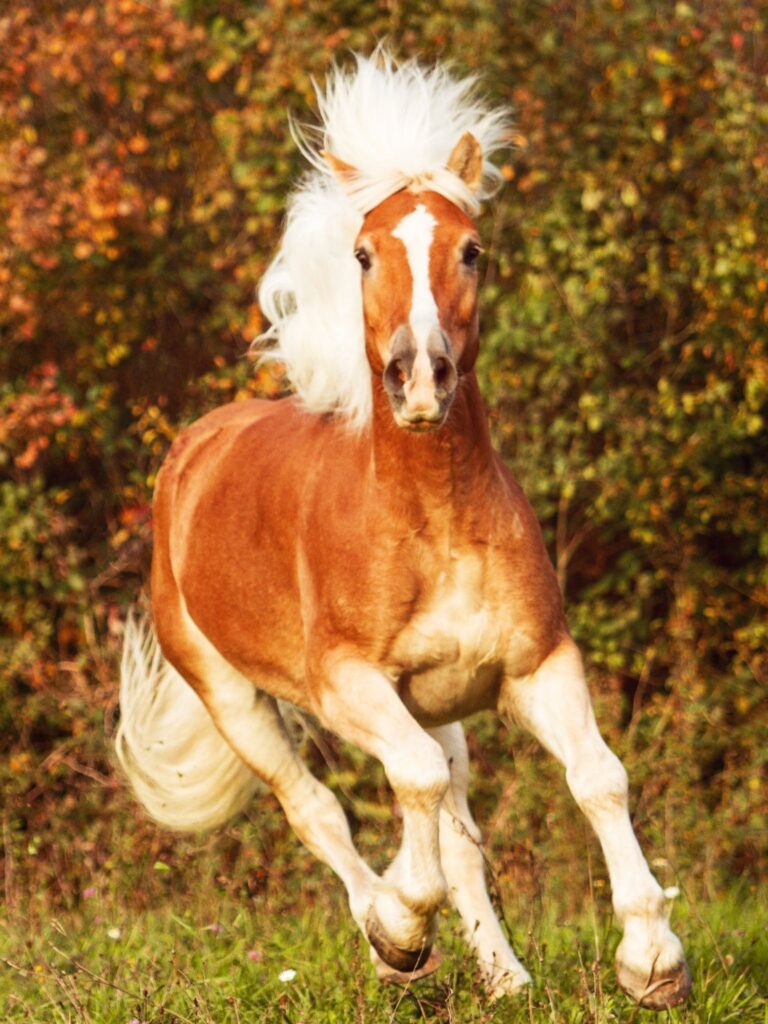
We used Haflingers on a long trail ride to pull a wagon full of kids. The horses were perfect companions and had endurance I’ve not seen in many larger breeds.
If you’re interested in learning more about the Haflinger breed, click on this link to read an article I wrote: Haflinger Horses: Are They Good for Beginners? Breed Facts
Black Forest horses
Like so many other long-haired horse breeds, the Black Forest Horses also come from a cold region. In this case, it’s the mountains of Southwestern Germany.
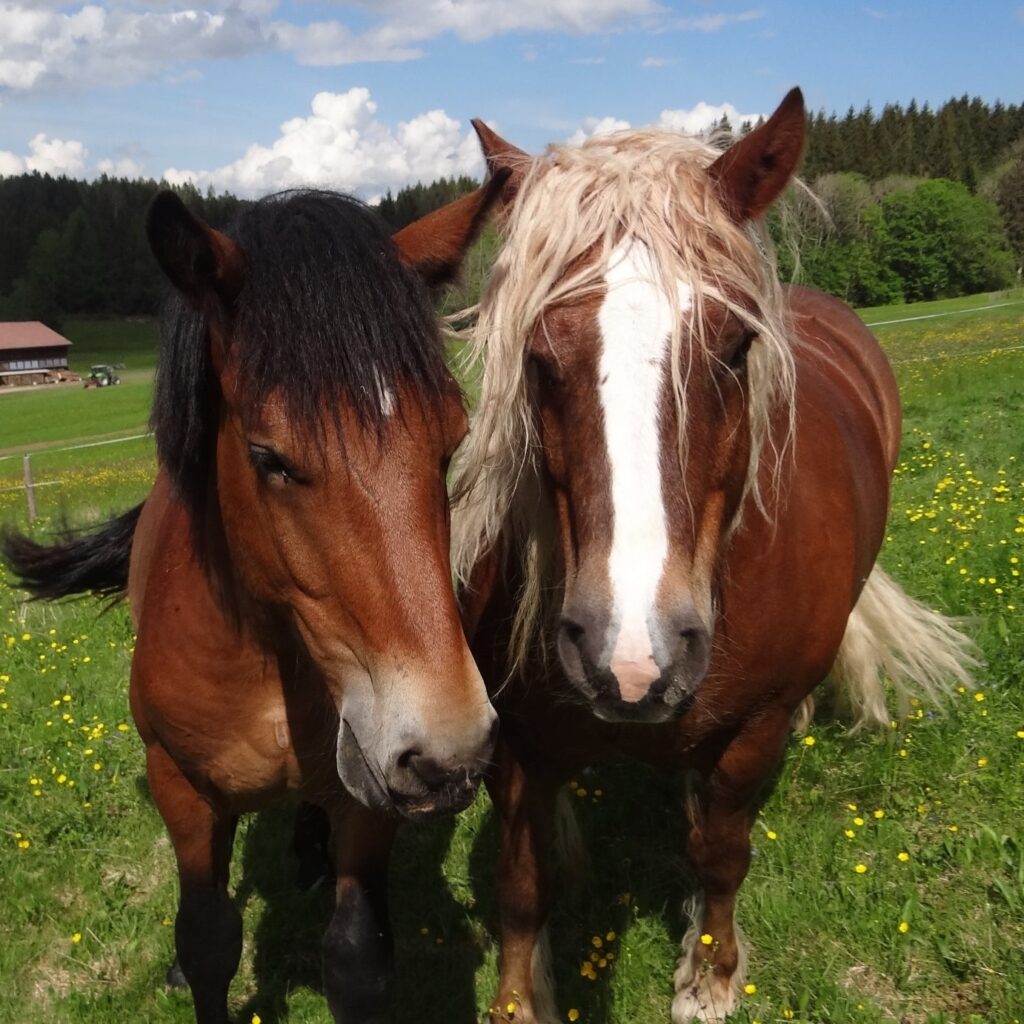
They are bred to work in cold climates and mountainous regions that require a hardy horse that can withstand frigid temperatures. Globally there are few Black Forest Horses left.
The majority of Black Forest Horses still live in southwestern Germany. The ancestors of the Black Forest Horses were much larger. However, they were crossed with smaller horses to produce the modern breed, which stands between 14.2 and 15.3 hands tall.
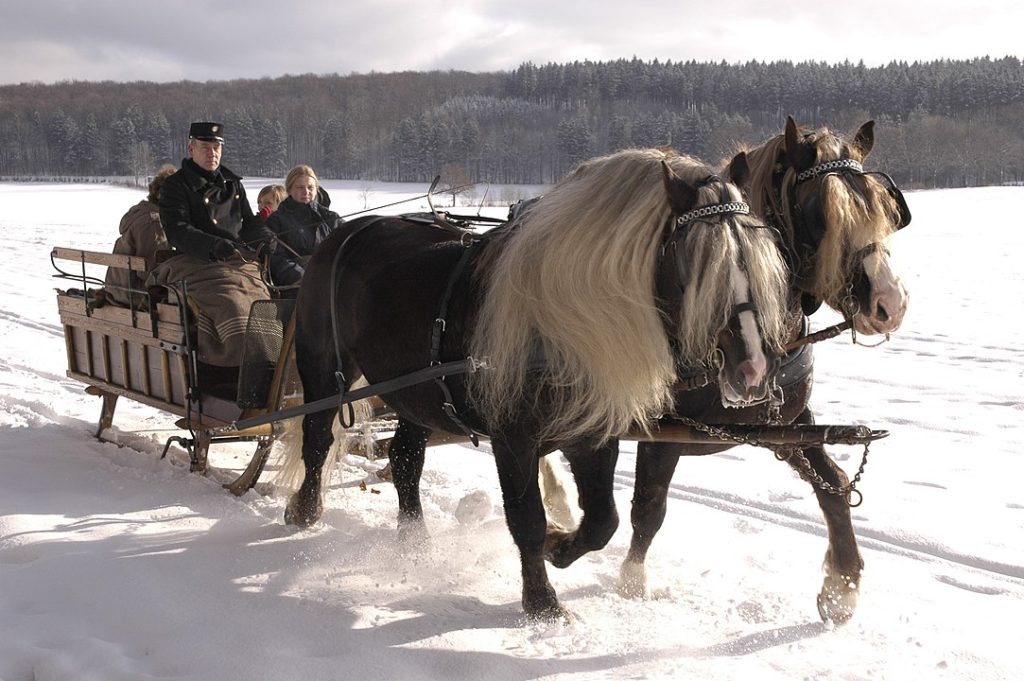
Black Forest horses must be chestnut or sorrel with a flaxen mane and tail, and because they are from a cold region, they have a long mane to help keep their neck warm.
Here is an article I wrote that provides more detailed information about this beautiful horse breed: What’s a Black Forest Draft Horse: Breed Facts and Colors
Paso Fino
Paso Finos are the pride of Puerto Rico. They originated from horses left by Spanish explorers in the 15th. Paso Fino’s bloodlines trace to Barb, Andalusian, and Jennet, a light-gaited horse with high endurance.
Other breeds were crossed with these foundation horses, and a new breed was called the Paso Fino. Paso Finos are most widely known for their appearance and gaited pace.
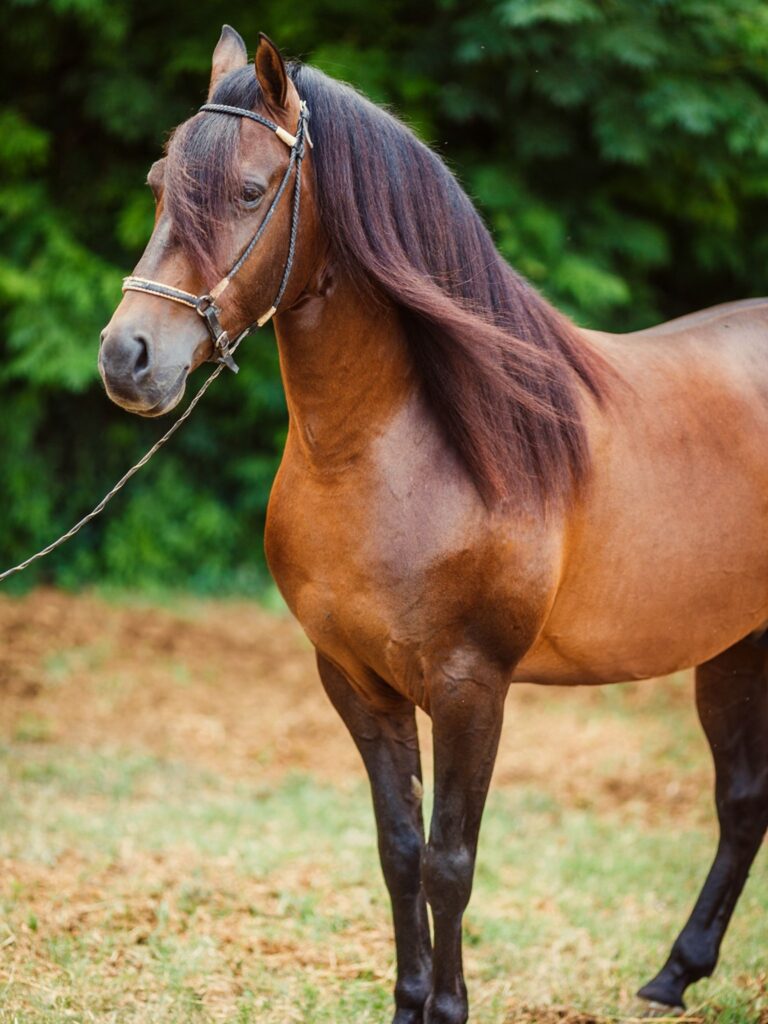
Paso Finos can have almost any equine coat color pattern, but the most common colors are bay, chestnut, brown, and sorrel. And although they sport many different colors, they all sport a glamorous long mane and tail accentuating their travel. They always sport a glamorous mane and tail.
Friesian horses
Friesian is likely the most popular of all long hair horse breeds. These are the glamorous horses you see in the movies and on the front of romance novels.
Friesian horses are tall and well-proportioned that typically display a black coat and thick manes and tails. They are athletic, smart, and versatile but have a genetic predisposition to die younger than most horse breeds.
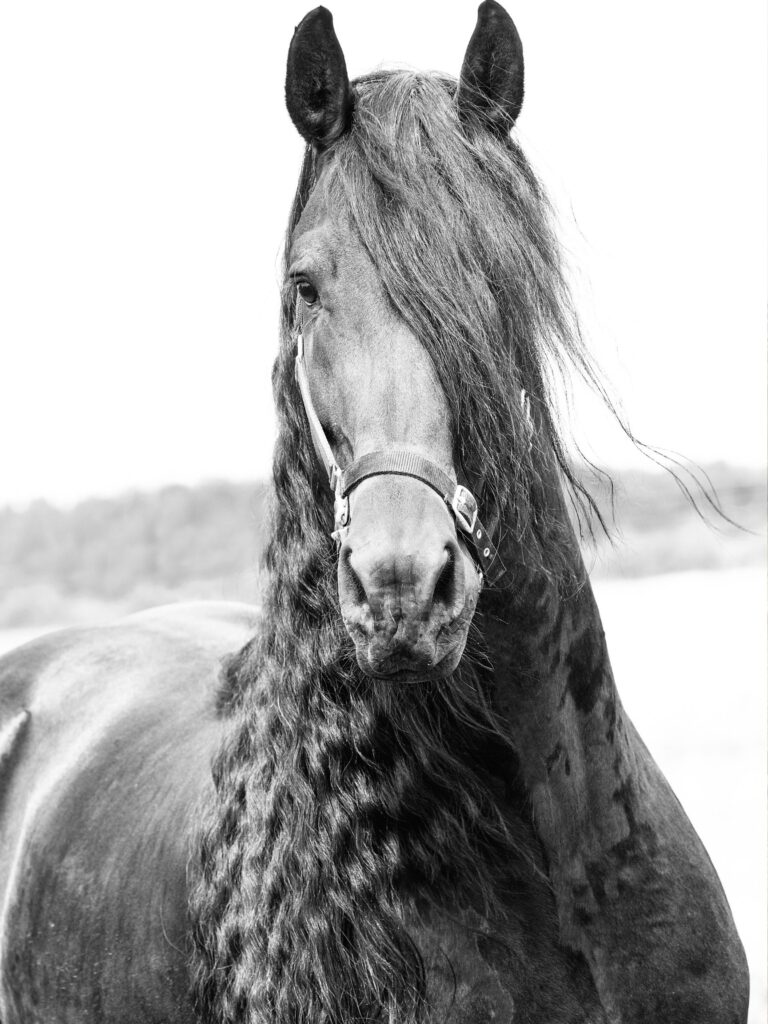
Like many other long hair breeds, Friesians are from a cold-weather region and have draft bloodlines in their pedigrees. Because of the influx of “cold blood,” they have a calm temperament and don’t easily spook.
Friesian horses were ridden to battle by knights in armor. Their strength was necessary to carry men’s weight, wearing metal protection and carrying heavy weapons.
Numerous Hollywood studios have portrayed the Friesian with its long flowing mane and tail carrying a knight cloaked in silver armor to battle for his king.
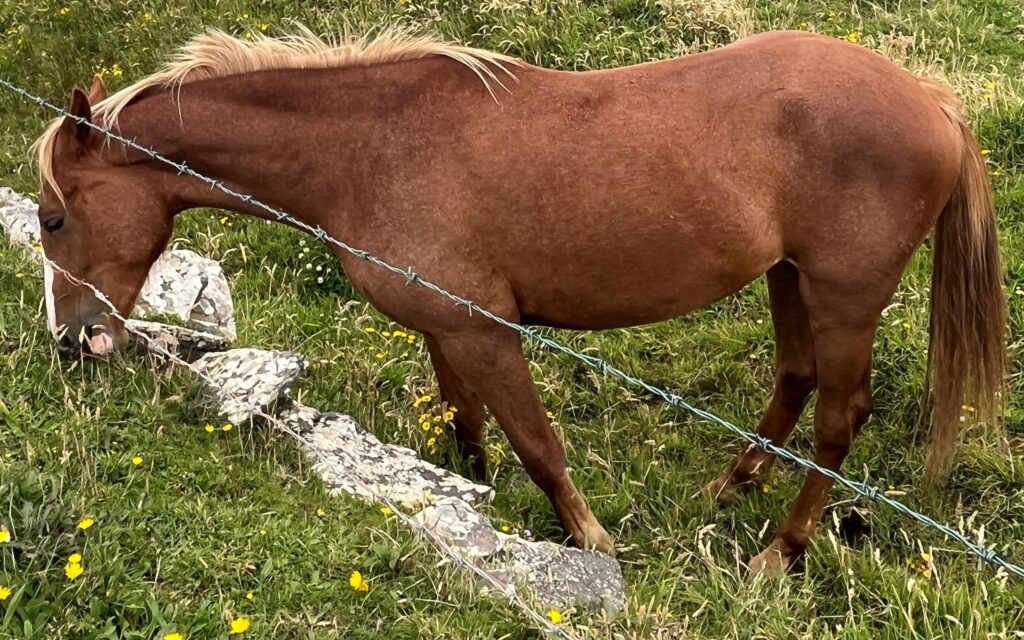
Why do some horses have long hair?
Horses have long hair for various reasons, including breed traits, climate, and the horse’s function or use. In some breeds, such as the Friesian, Gypsy Vanner, and Andalusian, long, flowing manes and tails are considered desirable characteristics.
In these breeds, horses with long hair may be more sought after for showing or breeding purposes. Long hair can provide an important layer of insulation in colder climates, keeping horses warm in harsh winter weather.
For example, ponies such as the Shetland and Icelandic breeds have thick, long hair that helps to keep them warm in cold and wet conditions. Some horses that are used for draft work, such as pulling plows or carts, may also have long hair as a form of protection.
The hair can help protect against abrasions from the harness and equipment. Long hair may also be seen in certain equestrian disciplines, such as dressage or classical riding, where it can be used to enhance the horse’s appearance or as a sign of good care.
It’s worth noting that not all horses with long hair are necessarily healthy or well-cared for. Proper grooming and care are essential to maintain the health and appearance of a horse’s hair, regardless of its length.
There is a good deal of genetic influence regulating hair strength and thickness that helps it grow longer. Some people would grow horses’ hair to the floor if they could. The same can be said about people; some of us have thin or weak hair that can’t grow long; it’s a genetic thing.
Caring for a horse with long hair isn’t easy; almost all these horses must be managed appropriately because their manes and tail hairs tangle, break, and grow shabby-looking.
It’s often in the best interest of the horse to braid or bind the hair to make it easier to care for and prevent tangles. There are also specially made coverings that assist in maintaining a horse’s mane and tails.
For manes, you can use a hood that stretches around the horse’s neck and presses the hair down, and for tails, there are numerous styles of tail bags designed to keep it clean and tangle-free.
To avoid damaging these beautiful horses’ long locks, groomers often spend countless hours meticulously combing their hair with gentle instruments. This method is necessary to prevent breakage and tangles.
The wavy appearance of many of these long-haired breeds is attributed to braiding. Another technique used to maintain a horse’s mane is called “pulling the mane.”
Pulling a mane is the procedure used to thin and shorten the horse’s hair, so it lays flatter; it can also shorten manes. There are a few different ways to pull a mane. Most people use a stiff comb and twist the hair around, then pull it down.
Some horses tolerate this pretty well, and others hate getting it done. Pulling, when done correctly, reduces the thickness of manes, trims them, and smooths them.
Below is my YouTube video on horse breeds with long hair.
Tips to promote the growth of a long mane and tail.
- Feed the proper nutrients that promote hair growth. If you want to grow out your horse’s mane and tail, then start with the basics. There is a lot of debate on what vitamins and supplements work best. Still, I suggest sticking with feeding high-quality hay and ensuring your horse gets a proper amount of omega fatty acids and B vitamin biotin. Get with a veterinarian or feed specialist and ask for their advice.
- Next, ensure your horse is in an environment that is conducive to growing long hair. If you keep your horse in a small stall with rough boards, it will likely rub its rear end and cause hair breakage. Keep an eye on horses in the pasture; sometimes, one is a hair biter, keep them away from other horses.
- Keep your horse mane and tail sanitary and detangled. Either brush it carefully or use your fingers to separate the long hairs. We spray our horse manes and tails liberally with a commercial detangler before and during brushing.
- Keep up with your horse’s vaccines and worming treatments. Parasites, diseases, and infections hinder hair growth. When your horses get sick, their hair and skin are often adversely impacted.

About the Author: Miles Henry
Lifelong Horseman | Racehorse Owner | Published Author
Miles Henry brings over 25 years of hands-on experience training and owning Thoroughbred racehorses. Raised with Quarter Horses and Appaloosas, he’s spent a lifetime learning from horses—on the track, in the barn, and in the field. Today, he runs a small but successful racing stable in Louisiana and shares real-world insights on HorseRacingSense.com, helping horse owners, fans, and bettors navigate the sport with confidence.
📚 Books: View Miles’s books on Amazon »
🎧 Podcast Guest: Animal Tales Ep. 32 |
YouTube Interview
📩 Newsletter: Sign up for racing tips and horse care advice »
🔗 Follow Miles:
Twitter |
Facebook |
YouTube



